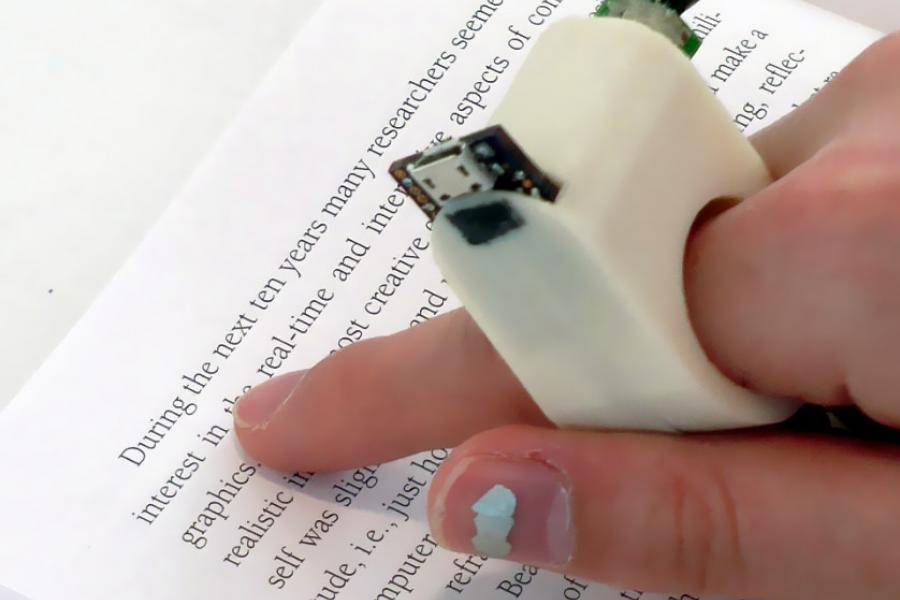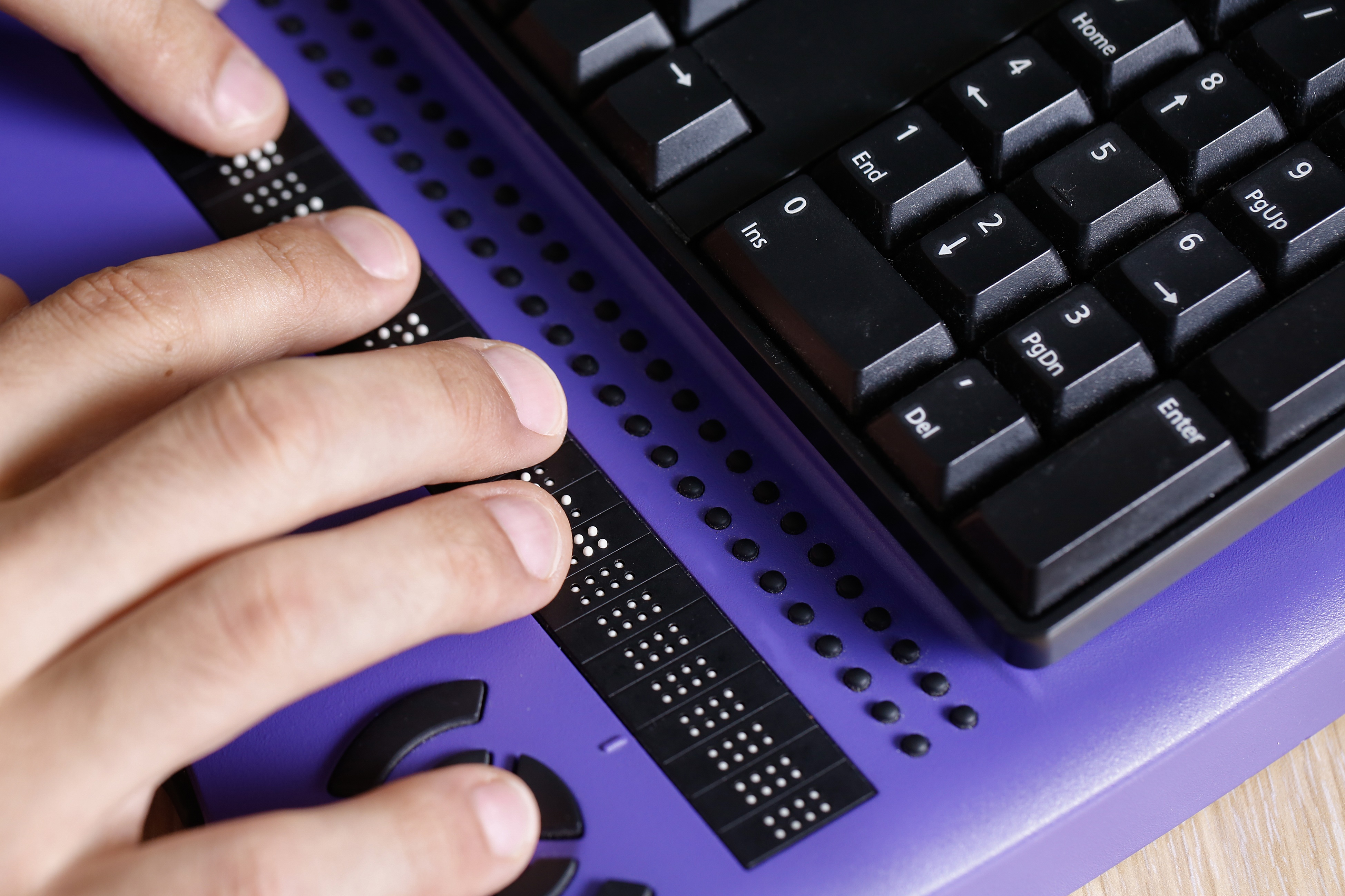OCR Devices for the Blind: Turning Print to Speech in Real-Time
OCR Devices for the Blind: Turning Print to Speech in Real-Time
Blog Article
Empowering Self-reliance With Assistive Technology for the Blind
The assimilation of assistive innovation right into the lives of people with aesthetic problems stands for a substantial advancement in promoting independence and self-sufficiency. From innovative screen readers to advanced smart canes, these tools not just boost everyday navigating and communication but additionally equip individuals to engage meaningfully in various facets of life. As we explore the myriad advantages and real-world applications of these technologies, it becomes critical to take a look at the underlying elements that add to their performance and the capacity for future developments in this essential area.
Review of Assistive Innovation

The growth of assistive modern technology is based in principles of inclusivity and empowerment. Innovations in software application, hardware, and sensory enhancements provide customers with choices tailored to their specific demands. From display viewers that convert text to speech, to responsive tools that communicate details with touch, these devices transform the way people involve with their environments.
In enhancement to functional applications, assistive technology promotes better social inclusion and engagement in different sectors, consisting of education and learning and work (Speech-to-text devices for low vision). As study and development remain to advance, the possibility for assistive modern technology to even more enhance the lives of visually impaired people remains encouraging, leading the way for an extra equitable culture where everybody can flourish
Sorts Of Assistive Tools
A variety of assistive tools have emerged to sustain individuals with aesthetic disabilities, each made to fulfill certain needs and enhance day-to-day functioning. These tools range from low-tech remedies to state-of-the-art developments, giving varied alternatives for individuals.
Low-tech tools include magnifiers and large-print products that aid in reading and writing. Braille devices, such as Braille slates and stylus pens, allow responsive reading and interaction. Alignment and movement help, like white canes, aid individuals navigate their atmosphere safely.
On the greater end of the range, electronic magnification systems and screen viewers supply considerable assistance. Electronic magnifiers permit customers to increase the size of text and photos on displays, while screen viewers convert electronic material into synthesized speech, assisting in accessibility to information on smart devices and computers.
Smartphone applications additionally play an important duty, giving attributes like text recognition and navigation assistance. Wearable innovation, such as smart glasses equipped with augmented reality, is arising as a promising device to enhance situational recognition.
Advantages of Assistive Modern Technology
The assimilation of assistive technology substantially enhances the lifestyle for people with aesthetic problems. These innovations empower users by promoting independence, allowing them to navigate their environments much more successfully and do day-to-day tasks with higher convenience. Screen viewers and magnification software program allow individuals to access electronic info, cultivating professional and academic opportunities that may have previously been out of reach.
Additionally, assistive tools such as wise walking sticks and general practitioners applications supply my link real-time navigation aid, enhancing wheelchair and safety. This increased freedom not just boosts self-worth but likewise encourages social involvement, enabling users to get involved even more completely in their communities.
Assistive modern technology also facilitates communication, aiding customers attach with others with voice recognition and text-to-speech applications. This capacity is crucial for preserving partnerships and accessing essential info.
Additionally, the modification options available with lots of assistive modern technologies make sure that users can tailor tools to their details demands, even more boosting use and efficiency. On the whole, the advantages of assistive innovation for people with visual impairments are profound, promoting an extra comprehensive culture where every person can seek their desires and objectives.
Study and Success Stories
Highlighting the transformative influence of assistive modern technology, countless study show exactly how individuals with visual impairments have successfully incorporated these tools into their daily lives. One compelling instance includes an university student who used display analysis software program to navigate academic products and on the internet sources properly. This technology not just facilitated her education and learning however additionally boosted her confidence in taking part in discussions and team jobs.
An additional study includes a professional who uses a smartphone application made for navigating and item acknowledgment. By utilizing this app, he has actually regained autonomy in both his personal and workplace, enabling him to commute independently and involve with associates better.
Additionally, a retired person shared her experience with braille e-readers, which allowed her to access a substantial selection of literature and remain gotten in touch with her neighborhood via book clubs.
These success stories highlight the crucial duty of assistive technology in fostering freedom, boosting lifestyle, and advertising social integration for individuals with visual problems (Speech-to-text devices for low vision). By accepting these cutting-edge tools, customers can conquer obstacles and confiscate opportunities that contribute to their specialist and individual useful link gratification

Future Fads in Assistive Innovation
Advancement in assistive technology is positioned to redefine the landscape of assistance for people with visual impairments. Arising trends emphasize the integration of artificial intelligence (AI) and machine discovering, which improve the functionality of gadgets that assist with navigation and details accessibility. AI-driven applications are now capable of interpreting aesthetic data in real-time, enabling users to involve with their environment more independently.
Moreover, the development of wearable technology is advancing swiftly. Smart glasses outfitted with enhanced reality (AR) can give audio descriptions of surroundings, transforming exactly how individuals communicate with public rooms. These tools not only advertise autonomy but additionally foster social inclusion.
Additionally, the Web of Points (IoT) is making homes smarter, enabling seamless connectivity in between daily devices and assistive gadgets. This connectivity equips customers by allowing voice-activated controls and automated reactions customized to individual needs.
Conclusion
Finally, assistive technology plays a pivotal function in empowering people with visual problems by enhancing their independence and engagement with their environments. The diverse variety of gadgets and applications available not only facilitates navigating and interaction yet likewise advertises social integration and opportunities for expert and personal growth. As improvements proceed in this area, the capacity for enhancing the lifestyle for those with aesthetic problems will broaden, promoting greater autonomy and empowerment.

Report this page